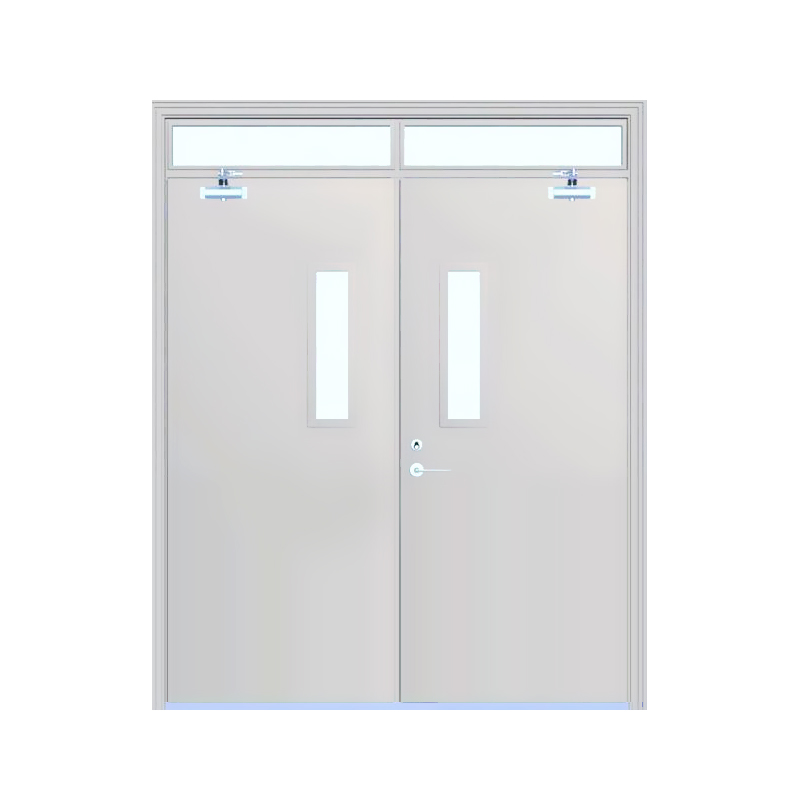

Cleanrooms are vital spaces in industries that require […]
Cleanrooms are vital spaces in industries that require high levels of contamination control, such as pharmaceuticals, biotechnology, electronics, aerospace, and medical device manufacturing. Maintaining a sterile, controlled environment is crucial to ensure product quality, safety, and compliance with regulatory standards. One of the often-overlooked yet crucial components of a cleanroom is the cleanroom door.
A critical aspect of cleanroom doors is their ability to create an airtight seal. This helps maintain the desired air pressure differential within the cleanroom and prevents contaminants from entering the space. The door seals must be highly effective at closing the gaps around the edges to maintain the integrity of the cleanroom’s air filtration system.
To minimize the risk of contamination, cleanroom doors are typically made from smooth, non-porous materials such as stainless steel, aluminum, or high-quality plastics. These materials are easy to clean, resistant to chemicals, and do not harbor bacteria or particles that could compromise the cleanliness of the room.
Given the rigorous cleaning and maintenance required in cleanrooms, doors must be durable and able to withstand frequent cleaning cycles. They should also be resistant to wear and tear from heavy traffic, especially in high-use areas. Stainless steel and other corrosion-resistant materials are commonly used to ensure that doors last for extended periods without degradation.
The design of cleanroom doors aims to minimize surfaces where dust, dirt, or contaminants could accumulate. The edges of the doors are rounded, and handles are often recessed or designed to reduce the risk of contamination from external sources. This makes cleaning easier and helps maintain a sterile environment.
In high-traffic areas of cleanrooms, automatic or touchless doors are often used to reduce the need for physical contact. These doors open and close based on sensors, minimizing the risk of contamination that could arise from human interaction. They also improve the overall efficiency of the cleanroom, reducing the time it takes for workers to enter and exit.
There are various types of cleanroom doors, each tailored to meet specific operational requirements. The most common types include:

Swing doors are the most traditional type of cleanroom door. These doors are hinged and swing open and closed manually or automatically. They are commonly used in areas where only occasional access is needed and where there’s limited space for doors to open fully. Swing doors are simple in design but must be well-sealed to meet the necessary cleanliness standards.
Sliding doors are ideal for high-traffic cleanrooms, where frequent access is required. These doors are mounted on tracks and slide open horizontally. They are commonly used in cleanrooms where space is limited and the door needs to open and close quickly without occupying much space. Sliding doors are available in manual and automatic options and are preferred in areas requiring frequent access without sacrificing cleanliness.
Revolving doors are another option used in some cleanrooms, particularly in areas with a high volume of people entering and exiting. These doors are designed to provide an airlock effect, which helps prevent contamination from the outside environment. They are particularly useful in maintaining cleanroom pressure, as they limit the amount of air exchange when opened.
Airlock doors are essential in cleanrooms where the environment needs to be strictly controlled. These doors typically feature two interlocking doors that cannot be opened simultaneously, which helps maintain the pressure and cleanliness of the space. They are designed to create a barrier between the cleanroom and other areas, ensuring that contaminants from outside do not enter the sterile environment.
For cleanrooms that require the highest level of contamination control, hermetically sealed doors are used. These doors create an airtight seal when closed and are often used in environments where contamination could result in critical failures, such as pharmaceutical or semiconductor manufacturing. Hermetically sealed doors are equipped with advanced sealing technology and are usually operated automatically to maintain an optimal controlled environment.
Cleanroom doors are integral to the overall contamination control strategy of any controlled environment. Their primary function is to:
By maintaining an effective seal and providing controlled access, cleanroom doors prevent dirt, dust, and microorganisms from entering the space. This is crucial in industries like pharmaceuticals, where even the smallest amount of contamination can compromise product quality.
In cleanrooms, maintaining a positive or negative air pressure is essential for controlling airflow and minimizing the risk of contamination. Cleanroom doors, especially airtight or airlock doors, play a critical role in ensuring that air pressure is maintained at optimal levels.
Cleanroom doors provide safe and easy access for personnel and equipment while ensuring that the room remains sterile. Automatic doors, in particular, offer convenience, especially in high-traffic areas, reducing the amount of time the door is open and limiting the potential for contamination.
The materials used in cleanroom doors, such as stainless steel or plastic, are easy to clean and sanitize, ensuring that hygiene standards are met. These doors help maintain the cleanliness of the entire environment and reduce the risk of cross-contamination.
Our new models offer superb design;competitive prices and their new features give them distinct advantages over similar products from other manufacturers.